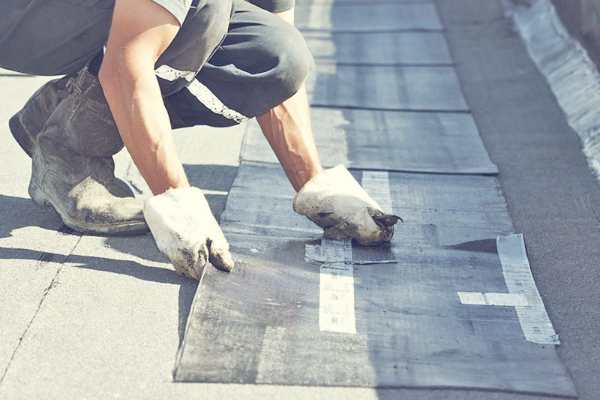In terms of home improvement, the roof often gets overlooked, yet it plays a critical role in the safeguarding and aesthetics of your home. Choosing the right color for your roof is not just about enhancing curb appeal; it also involves real-world factors such as energy efficiency, longevity, and how well your roof can withstand the elements. Whether you are replacing an old roof or building a new home, understanding the relationship between color and performance can help you make an informed decision.

A roof serves as a barrier against harsh weather while also influencing the overall style of your home. With a broad range of roofing materials available—from asphalt shingles to metal and tiles—each material responds uniquely to color choices in terms of heat absorption and reflectivity. Furthermore, the right color can improve the longevity of your roof by helping to alleviate issues like heat buildup and snow accumulation. This article will take you through various aesthetic and practical factors to take into account when choosing your roof color, ensuring your selection complements both your home’s style and functional requirements.
Grasping Roof Durability and Components
The lifespan of a roof is influenced by the materials used, the setup process, and the environmental factors it encounters. Asphalt roofing, for example, typically survive around a span of 15 to 30 years, contingent on the quality and maintenance. Sheet metal roofs can exceed asphalt, with lifespans ranging from 40 to 70 years, making them a robust choice. On the flip side, materials like tile or slate offer even greater longevity, sometimes exceeding a century, but they carry higher upfront costs.
Choosing the appropriate roofing material goes past just longevity. Visual appeal is also key, as diverse materials provide different looks that can boost your home’s curb appeal. For instance, a ceramic tile roof can infuse a Mediterranean flair, while a standing seam metal roof offers a sleek, stylish appearance. Homeowners should take into account their home design, local climate, and community regulations when deciding on materials to ensure both beauty and functionality align with their needs.
Consistent maintenance plays a significant role in extending the lifespan of roof materials. Overlooking small repairs can lead to bigger issues, such as drips or damage to the structure that may require expensive replacements. Homeowners should remain alert for signs of wear and talk to professionals for evaluations, as a roof is a vital investment in their home's overall stability and investment. Grasping the qualities and lifespan of different roofing materials can enable homeowners to make wise decisions about care and potential replacements.
Indicators It's Time Replacing Your Roof
One of the most telling indicators that it could be time for a roof replacement is the state of the shingles. When you see curling, cracking, or missing shingles, this can indicate that the roof is in decline. An inspection may reveal that the shingles have become brittle and are no longer providing adequate protection against the elements. Additionally, if granules from the shingles are accumulating in your gutters, it could be a sign that they are deteriorating and unable to effectively protect your home.
Another major sign is the presence of water stains on your ceiling or walls. These stains indicate that there could be leaks in your roof. If left anonymous , water infiltration can lead to more serious issues like mold growth and structural damage. If you find yourself having to patch over leaks often, it is likely more cost-effective in the long run to consider a complete roof replacement rather than ongoing repairs.
Finally, if your roof is nearing the end of its expected lifespan, it might be time to plan for a replacement. Different roofing materials have varying life expectancies; for example, asphalt shingles last about 20 to 30 years, while metal roofs can last 40 years or more. When your roof is approaching or has surpassed its lifespan, proactive replacement can prevent unexpected leaks and costly damage to your home. Regular inspections can help determine if a replacement is necessary, providing peace of mind that your home remains protected.
Selecting the Proper Roof Material and Hue
As you choosing roofing materials, it is important to think about the visual appeal as well as the functional advantages they provide. Various materials such as shingles, metal, tile, and wood shake come with individual characteristics that influence not only the appearance of your house but also its strength and care requirements. For instance, asphalt shingles are popular for their cost-effectiveness and ease of installation, while metal is renowned for its durability and energy efficiency. Understanding the advantages and disadvantages of every type can assist you formulate an informed choice that aligns with your tastes and lifestyle.
Hue is an additional important factor in roofing choice. The right shade can enhance your house's curb appeal, complement its design, and also affect the efficiency of energy use. Lighter hues reflect sunlight, possibly lowering air conditioning expenses in warmer climates, while darker hues may assist in snow melt during winter. It's also important to think about how the shade will look with the existing elements of your house, such as exterior cladding and trim, as also your community's overall look. Hiring a qualified design expert can provide insight into theory of colors and current trends to ensure your roof matches your vision.
In conclusion, prior to making a choice, consider the enduring consequences of your decisions. The lifespan of roof material can vary considerably, influencing how often you will need to replace your roofs. Appropriate fitting by a qualified contractor along with consistent maintenance can prolong the life of your roofs, making it essential to choose material and hues that will resist the elements while meeting your aesthetic desires. Being aware of these factors will help you not only choose the correct roof materials and color but also guarantee that your house remains beautiful and functional for many years to come.
